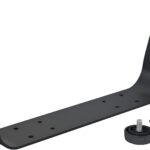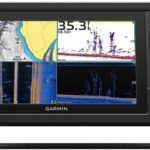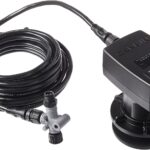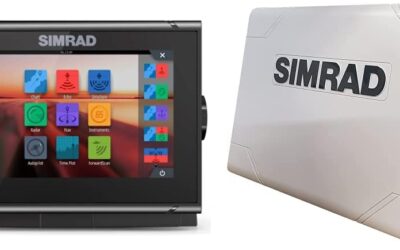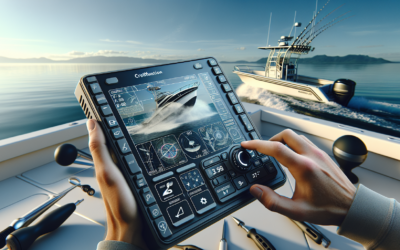Are you an avid fisherman who is curious about the benefits of using fish finders? Look no further than our new product, “Bridging The Gap: Transitioning from Traditional Fishing to Using Fish Finders.” This innovative guide is designed to help you seamlessly integrate fish finders into your fishing routine, enhancing your chances of success on the water. With step-by-step instructions and expert tips, you’ll quickly learn how to navigate the transition from traditional methods to utilizing the latest fish-finding technology. Upgrade your fishing experience and catch more fish with “Bridging The Gap: Transitioning from Traditional Fishing to Using Fish Finders.”
Understanding Traditional Fishing Techniques
Types of traditional fishing techniques
Traditional fishing techniques have been used for centuries to catch fish and sustain livelihoods. These techniques vary depending on the geographical location and cultural practices of different communities. Some common traditional fishing techniques include:
- Handline Fishing: This is a simple and ancient method that involves using a single line with a baited hook, which is held in the fisherman’s hand or attached to a rod. It requires skill and experience to effectively catch fish using this technique.
- Traps and Weirs: Traps and weirs are stationary fishing structures that are strategically placed in bodies of water to capture fish. These structures can be made from various materials, such as wooden stakes or nets, and are designed to guide fish into a confined space for easy capture.
- Gillnet Fishing: Gillnetting involves the use of a net with small mesh size that is positioned vertically in the water. This technique relies on the fish getting entangled in the net as they try to pass through it. It is commonly used for targeting specific species of fish.
- Spearfishing: Spearfishing is a technique that involves manually spear-hunting fish underwater. Traditionally, this method was done using a sharp spear or a trident, and required excellent swimming and diving skills.
Advantages and limitations of traditional fishing
Traditional fishing techniques have their own set of advantages and limitations. Some advantages include:
- Simplicity: Traditional methods are often simple and require minimal equipment, making them accessible to a wide range of fishermen.
- Cost-effective: Traditional fishing techniques are generally less expensive, as they rely on basic tools and resources that can be obtained locally.
- Sustainable: Traditional fishing techniques, when practiced responsibly, can be more sustainable compared to modern fishing methods that may deplete fish populations.
However, traditional fishing techniques also have their limitations:
- Inefficiency: Traditional methods can be time-consuming and may not be as efficient in catching large quantities of fish.
- Limited targeting: Traditional techniques are often not specific to particular fish species, making it difficult to selectively catch desired species and avoid bycatch.
- Lack of precision: Without advanced technology, traditional fishermen have limited ability to locate fish and determine underwater conditions.
To bridge the gap between traditional fishing and modern techniques, fish finders provide a valuable tool for fishermen.
Introduction to Fish Finders
What are fish finders?
Fish finders are electronic devices that utilize sonar technology to locate fish and other underwater objects. They provide fishermen with real-time feedback on the presence of fish, water depth, and bottom contour. Fish finders consist of several components that work together to gather and display data.
Components and functionality of fish finders
Fish finders typically consist of the following components:
- Transducer: The transducer is the core component of a fish finder. It emits sonar waves into the water and receives the echoes produced by objects underwater. The transducer is usually mounted on the boat hull or attached to a transom or trolling motor.
- Display: The display screen of a fish finder shows the information gathered by the transducer. It can vary in size and resolution, providing clear visuals of underwater activity. Modern fish finders often have color displays that help differentiate objects and fish.
- Control unit: The control unit allows users to adjust settings and customize the display according to their preferences. It includes buttons or touch screen controls that enable users to change sensitivity, zoom, and other parameters.
- Power source: Fish finders are powered by onboard batteries or the boat’s electrical system. The power source supplies electricity to the different components of the fish finder.
Fish finders work by emitting sound waves, or sonar, into the water. When these waves encounter objects, such as fish or the bottom of the water body, they bounce back as echoes. The transducer receives these echoes and converts them into a visual representation on the display screen. This allows fishermen to locate and track fish, as well as analyze underwater structures and conditions.
Benefits of Using Fish Finders
Increased fishing efficiency
Fish finders can significantly enhance fishing efficiency by providing real-time information about fish location, depth, and underwater structure. With this technology, fishermen can focus their efforts on areas where fish are present, reducing the time spent searching for fish and increasing the chances of a successful catch.
Higher catch rates
By accurately locating fish, fish finders can greatly improve catch rates. Instead of relying on guesswork and traditional knowledge, fishermen can rely on the data provided by the fish finder to strategically position themselves and present their bait or lures to the fish with higher precision.
Time and cost savings
Fish finders save valuable time on the water by allowing fishermen to quickly identify productive fishing spots. This eliminates the need for extensive exploration and guesswork, enabling fishermen to spend more time actively fishing. Additionally, the ability to target specific species using fish finders can reduce bycatch and minimize the waste of time and resources on undesired fish.
Understanding Fish Finder Technology
Sonar technology in fish finders
Fish finders utilize sonar technology, which stands for Sound Navigation and Ranging, to detect and locate objects underwater. Sonar works by emitting sound waves, usually in the form of high-frequency pulses, into the water. These sound waves travel through the water and bounce back when they encounter an object. By calculating the time it takes for the sound waves to return, fish finders can measure the depth and distance of the object.
Different types of fish finders
There are several types of fish finders available, catering to different fishing environments and preferences. Some common types include:
- Standalone Fish Finders: These fish finders consist of a display screen, control unit, and transducer. They provide basic sonar functionality without additional advanced features.
- Combination Fish Finders: Combination fish finders integrate GPS (Global Positioning System) capabilities, allowing fishermen to mark productive fishing spots and navigate more effectively. They provide a comprehensive view of underwater features along with GPS data.
- Portable Fish Finders: Portable fish finders are compact and easily transportable. They are designed for fishermen who do not have a permanent mounting location for their fish finder or enjoy fishing from various vessels.
Choosing the right fish finder for your needs
When choosing a fish finder, it is essential to consider various factors, including fishing environment, budget, and personal preferences. Here are some key aspects to consider:
- Frequency: Fish finders operate using different frequencies, typically ranging from 50 kHz to 200 kHz. Lower frequencies are suitable for deeper waters, while higher frequencies provide finer detail in shallower waters.
- Transducer type: Different transducers are designed for specific mounting locations, such as hull-mounted, transom-mounted, or trolling motor-mounted. Consider the type of boat and its layout when selecting a transducer.
- Display size and resolution: The display size and resolution determine the clarity and visibility of the information provided. Larger displays offer better visibility, especially in bright sunlight or rough conditions.
- Advanced features: Consider additional features, such as GPS, chart plotting, and side imaging, if they align with your fishing style and preferences.
By understanding the technology and considering your specific needs, you can choose a fish finder that will enhance your fishing experience.
Learning to Interpret Fish Finder Data
Interpreting sonar imaging
Interpreting sonar imaging is a crucial skill for effectively using fish finders. Sonar imaging is displayed on the fish finder’s screen and provides information about what is present beneath the surface. Here are some key elements to understand:
- Fish arches and echoes: Fish arches or echoes appear as curved lines on the display, representing fish or other underwater objects. It is important to differentiate between fish and other objects, such as debris or vegetation, to accurately target fish.
- Bottom composition and structure: Sonar can provide valuable insights into the composition of the bottom, whether it is rocky, sandy, or muddy. Additionally, it can help identify underwater structures, such as submerged logs or rock formations, that may attract fish.
- Water column: The water column refers to the area between the surface and the bottom. By examining the sonar display, fishermen can determine the depth at which fish are located within the water column. This information can be used to adjust bait or lure presentation accordingly.
Identifying fish arches and echoes
Fish arches and echoes on the sonar display often indicate the presence of fish. Understanding how to interpret and identify these signals is essential for successful fishing with fish finders. Here are some tips for identifying fish arches and echoes:
- Arch shape: Fish arches typically appear as curved or semi-circular shapes on the display. The shape can vary depending on the fish’s size, speed of movement, and angle relative to the transducer.
- Signal strength: Fish arches that are brighter or denser in appearance often indicate larger fish or a greater concentration of fish in a particular area. Pay attention to the intensity of the echo to gauge the potential size or density of the fish.
- Movement patterns: Fish that are actively swimming will create continuous or intermittent arches on the display. On the other hand, stationary fish or objects will appear as solid echoes without any movement.
By understanding these visual cues, fishermen can effectively identify fish and make informed decisions about targeting specific areas or adjusting their fishing approach.
Understanding bottom composition and structure
Fish finders provide valuable information about the bottom composition and underwater structures, which can greatly influence fish behavior. Here are some key considerations when interpreting bottom composition and structure using a fish finder:
- Bottom hardness: The sonar display can reveal variations in bottom hardness, ranging from soft or muddy bottoms to hard or rocky bottoms. Certain fish species are attracted to specific bottom types, so identifying the bottom composition can help target preferred species.
- Underwater vegetation: Fish finders can detect submerged vegetation, such as weed beds or submerged grass. These areas often provide shelter and food for fish, making them prime fishing spots.
- Submerged structures: By examining the sonar imaging, fishermen can identify submerged structures, such as drop-offs, submerged trees, or rock formations, which can serve as hiding places or feeding grounds for fish.
Understanding the bottom composition and structure enables fishermen to locate areas where fish are likely to congregate, improving their chances of a successful catch.
Detecting underwater vegetation
Underwater vegetation plays a significant role in fish behavior and can be detected using fish finders. Fishermen can identify and locate areas with abundant submerged vegetation, such as weed beds or grass, using the sonar display. These areas often attract fish, as they provide food, shelter, and breeding grounds.
When using a fish finder to detect underwater vegetation, look for dense patches or irregular patterns on the display. These visual cues indicate the presence of submerged plants, and fishing around these areas can increase the likelihood of encountering fish.
Developing New Fishing Techniques
Using fish finders for targeted species
Fish finders allow fishermen to target specific species by providing information about their location and depth in the water column. By analyzing the sonar data and identifying the preferred habitat of the desired species, fishermen can focus their efforts on those specific areas. This targeted approach increases the chances of successfully catching the desired species and reduces the bycatch of unwanted fish.
For example, if targeting bass, fish finders can help locate submerged structures where bass often hide, such as fallen trees or rocky areas. By positioning the boat near these structures and using appropriate bait or lures, fishermen can increase the chances of attracting bass.
Utilizing depth and temperature data
Fish finders provide valuable information about water depth and temperature. This data can be utilized to develop new fishing techniques and improve catch rates. Here’s how depth and temperature data can be used:
- Depth data: By analyzing the water depth, fishermen can determine the preferred depth range of different fish species. Adjusting bait or lure presentation to match the depth at which fish are located can significantly increase the chances of attracting bites.
- Temperature data: Water temperature affects fish behavior and can influence their feeding patterns. By monitoring the temperature readings provided by the fish finder, fishermen can identify temperature preferences of specific fish species and adjust their fishing techniques accordingly.
Understanding depth and temperature preferences allows fishermen to optimize their fishing strategies and increase their success rates.
Mapping out productive fishing spots
Fish finders with GPS capabilities enable fishermen to mark and map productive fishing spots. By saving waypoints and tracks, fishermen can create a personal database of successful fishing locations. Over time, this information helps create a comprehensive map of productive fishing spots in different water bodies.
Mapping out productive fishing spots allows fishermen to build a library of reliable locations for future fishing trips. This saves time and improves efficiency by eliminating the need to search for new spots on each outing.
Adjusting Fishing Strategies
Changing bait and lure selection
Fish finders can provide valuable information about fish behavior and preferences. By analyzing the sonar data and observing fish activity, fishermen can make informed decisions about bait and lure selection. Some key considerations when changing bait and lure selection using a fish finder include:
- Species preferences: Different fish species have specific feeding preferences. Sonar imaging can help identify the species present and the size of the fish, allowing fishermen to select bait or lures that mimic the preferred prey.
- Presentation adjustments: By observing fish behavior on the fish finder display, fishermen can determine if the fish are actively feeding, resting, or showing signs of aggression. Making adjustments in bait or lure presentation, such as varying retrieval speed or using different techniques, can increase their effectiveness in attracting fish.
- Matching the bottom composition: Certain fish species prefer specific bottom compositions. By examining the sonar display and identifying the bottom type, fishermen can choose bait or lures that closely resemble the natural prey found in those areas.
By adapting bait and lure selection based on fish finder data, fishermen can increase their chances of enticing fish to bite and achieve greater success on the water.
Adapting to different water conditions
Fish finders allow fishermen to adapt their fishing strategies to different water conditions. By understanding how water conditions affect fish behavior, fishermen can make adjustments to their approach. Here are some considerations when adapting to different water conditions using a fish finder:
- Water clarity: Clear water provides better visibility for fish, making them more cautious and selective in their feeding. In such conditions, downsizing bait or lures and using natural colors can yield better results. In murky or stained water, larger and brighter baits or lures may be more effective in attracting fish.
- Water temperature: Water temperature directly influences fish metabolism and feeding patterns. In warmer water, fish are generally more active and prefer faster-moving baits or lures. In colder water, slowing down the retrieval speed and using slower presentations can be more effective.
- Weather patterns: Changes in weather, such as fronts or storms, can affect fish behavior. Fish finders can detect these changes by monitoring fish movements or changes in underwater structures. By adapting fishing strategies to these conditions, fishermen can maximize their chances of success.
Adapting to different water conditions using fish finders allows fishermen to effectively target fish in various situations, increasing their overall catch rates.
Modifying retrieval techniques
Fish finders can provide valuable insights into fish behavior and response to different retrieval techniques. By observing fish activity on the sonar display, fishermen can refine their retrieval techniques to better entice fish to bite. Here are some tips for modifying retrieval techniques using fish finders:
- Speed adjustments: Adjusting the retrieval speed can have a significant impact on enticing fish to bite. Sonar imaging can reveal whether fish are actively chasing or following the bait or lure. Experimenting with different retrieval speeds can help find the optimum speed for triggering a strike.
- Depth variations: Fishing at different depths along the water column can increase the chances of attracting fish. By analyzing the sonar display and identifying the depth at which fish are located, fishermen can adjust their retrieval techniques to target fish at specific depths.
- Varying lure actions: Different lure actions, such as jerking, twitching, or steady retrieves, can elicit different responses from fish. By observing fish behavior on the fish finder display, fishermen can experiment with different lure actions to find the one that attracts the most bites.
Modifying retrieval techniques based on fish finder data helps fishermen present their bait or lures more effectively, increasing their success rates on the water.
Overcoming Challenges and Limitations
Interference from other electronic devices
Fish finders operate using sonar technology, which can be affected by interference from other electronic devices. To ensure accurate readings and avoid interference, fishermen should:
- Keep other electronic devices, such as radios or mobile phones, away from the fish finder.
- Check the manufacturer’s guidelines for recommended distances between electronic devices to minimize interference.
- Position the fish finder’s transducer away from sources of electrical interference, such as trolling motors or outboard motors.
By minimizing interference from other electronic devices, fishermen can obtain reliable and accurate information from their fish finder.
Dealing with false readings
Fish finders can occasionally produce false readings, which can be misleading. False readings may include inaccurate fish arches, echoes caused by water turbulence, or interference from suspended particles in the water. To deal with false readings:
- Understand common sources of false readings, such as floating debris, thermoclines, or air bubbles, and learn to differentiate between genuine fish signals and false signals.
- Adjust the fish finder’s sensitivity settings to reduce the likelihood of false readings.
- Regularly clean the transducer to prevent false readings caused by debris or marine growth.
By being aware of potential false readings and taking necessary precautions, fishermen can effectively interpret the data provided by the fish finder.
Learning to trust the technology
Transitioning from traditional fishing techniques to using fish finders may initially be challenging. It is essential to develop trust in the technology and understand its capabilities. Here are some tips for learning to trust fish finder technology:
- Spend time experimenting and familiarizing yourself with the fish finder’s functionality.
- Practice using the fish finder in different fishing environments to gain confidence in its accuracy and reliability.
- Seek advice and guidance from experienced fishermen who have successfully integrated fish finders into their fishing techniques.
By gaining experience and confidence in using fish finder technology, fishermen can unlock its full potential and maximize their fishing success.
Tips and Best Practices for Successful Transitions
Gradual integration of fish finders
When transitioning from traditional fishing techniques to using fish finders, a gradual integration approach can be beneficial. Start by using the fish finder as a supplementary tool alongside traditional techniques. Over time, gradually rely more on the fish finder’s data and reduce reliance on traditional methods. This allows for a smooth transition and ensures the development of skills in interpreting and utilizing fish finder information effectively.
Seeking guidance from experienced users
Reaching out to experienced fishermen who have successfully transitioned to using fish finders can provide valuable insights and guidance. They can share their experiences, tips, and best practices, helping minimize learning curves and maximizing the benefits of fish finder technology. Additionally, joining fishing communities or online forums can connect fishermen with a network of experienced users who can offer support and advice.
Improving overall fishing skills
While fish finders enhance fishing techniques, it is crucial to continue developing overall fishing skills. Mastering casting, retrieving, and lure presentation techniques remains essential, even when utilizing fish finder technology. By improving fundamental fishing skills, fishermen can better capitalize on the advantages offered by fish finders and adapt to various fishing conditions.
Environmental Considerations
Minimizing impact on fish populations
When using fish finders, it is important to consider and minimize the potential impact on fish populations and their habitats. Here are some environmental considerations to keep in mind:
- Avoid excessive or unnecessary disturbance to fish habitats.
- Practice catch-and-release fishing for conservation purposes.
- Adhere to fishing regulations and follow size and bag limits to prevent overfishing.
Responsible fishing practices, together with the use of fish finders, can help ensure the sustainability of fish populations for future generations of anglers to enjoy.
Responsible use of fish finders
To minimize environmental impact, fishermen should use fish finders responsibly. Here are some responsible use practices:
- Turn off fish finders when not in use to conserve battery power and minimize disturbances to marine life.
- Dispose of old or damaged fish finders properly to prevent environmental pollution.
- Regularly maintain fish finders to ensure optimal performance and minimize the chances of malfunction or damage.
By using fish finders responsibly, fishermen can enjoy the benefits of this technology while maintaining respect for the natural environment.
Bridging the gap between traditional fishing techniques and modern fish finders opens up new opportunities for fishermen to enhance their fishing experience. These electronic devices provide valuable insights into fish location, underwater structures, and water conditions, helping fishermen increase efficiency, catch rates, and overall success on the water. With an understanding of fish finder technology and its features, as well as the ability to interpret sonar data, fishermen can develop new fishing techniques, adjust strategies, and overcome challenges to become more proficient anglers. However, it is important to remember to use fish finders responsibly, considering both environmental impact and the continued development of fundamental fishing skills. By embracing fish finder technology while preserving traditional fishing knowledge, fishermen can bridge the gap and embark on a new era of fishing success.

